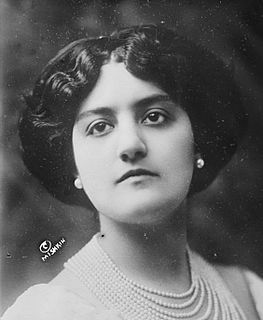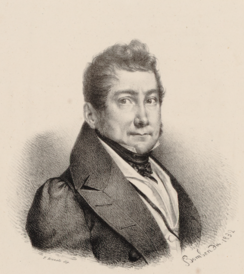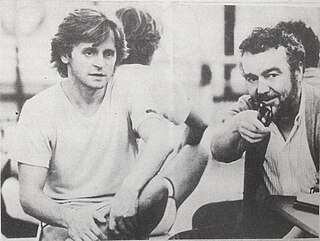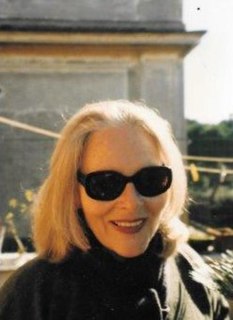Arcadia Productions is the largest English-speaking theatre company in Italy. The company was formed as 'La Nuova Arcadia' in 1991, and changed its name and legal status in 2000, becoming Arcadia Productions s.a.s. Arcadia is co-directed by Graham Spicer and Carlo Orlandi. The majority of the company's work is for schools, which form 97% of its public. Arcadia is part of the Teatro per Ragazzi (Children's Theatre) network in the province of Lombardy. [1] Arcadia currently has 9 productions in its repertoire, and adds a new production at the beginning most seasons. [2]

Italy, officially the Italian Republic, is a European country located in Southern Europe consisting of a peninsula delimited by the Alps and surrounded by several islands. Located in the middle of the Mediterranean sea and traversed along its length by the Apennines, Italy has a largely temperate seasonal and Mediterranean climate. The country covers a total area of 301,340 km2 (116,350 sq mi), and land area of 294,140 km2 (113,570 sq mi), and shares open land borders with France, Switzerland, Austria, Slovenia, and the enclaved microstates of Vatican City and San Marino. Italy has a territorial exclave in Switzerland (Campione) and a maritime exclave in the Tunisian Sea (Lampedusa). With around 60 million inhabitants, Italy is the fourth-most populous member state of the European Union.
The company's offices are in Milan, [3] where the premières of all new productions take place, and where the company is in residence for 10 weeks each season. Though primarily a touring company, Arcadia has two bases in Milan: the Teatro San Carlo (490 seats) opposite Santa Maria delle Grazie which houses Leonardo da Vinci's 'The Last Supper'; and Teatro La Creta (400 seats) on the western outskirts of the city. The touring schedule takes Arcadia to most of the important cities and theatres in the north and central parts of Italy: Turin, Bergamo, Brescia, Verona, Vicenza, Padua, Udine, Pordenone, Firenze, Bologna, Imperia, Rome, Lecco, Monza and Novara. Historic theatres included in the season are the [4] in Novara, the [5] in Cremona, and the Teatro Fraschini in Pavia.

Milan is a city in northern Italy, capital of Lombardy, and the second-most populous city in Italy after Rome, with the city proper having a population of 1,395,274 while its metropolitan city has a population of 3,255,773. Its continuously built-up urban area has a population estimated to be about 5,270,000 over 1,891 square kilometres. The wider Milan metropolitan area, known as Greater Milan, is a polycentric metropolitan region that extends over central Lombardy and eastern Piedmont and which counts an estimated total population of 7.5 million, making it by far the largest metropolitan area in Italy and the 54th largest in the world. Milan served as capital of the Western Roman Empire from 286 to 402 and the Duchy of Milan during the medieval period and early modern age.

Santa Maria delle Grazie is a church and Dominican convent in Milan, northern Italy, and a UNESCO World Heritage Site. The church contains the mural of The Last Supper by Leonardo da Vinci, which is in the refectory of the convent.

Leonardo di ser Piero da Vinci, more commonly Leonardo da Vinci, was an Italian polymath of the Renaissance whose areas of interest included invention, drawing, painting, sculpture, architecture, science, music, mathematics, engineering, literature, anatomy, geology, astronomy, botany, paleontology, and cartography. He is widely considered one of the greatest painters of all time, despite perhaps only 15 of his paintings having survived. The Mona Lisa is the most famous of his works and the most popular portrait ever made. The Last Supper is the most reproduced religious painting of all time and his Vitruvian Man drawing is regarded as a cultural icon as well. Leonardo's paintings and preparatory drawings—together with his notebooks, which contain sketches, scientific diagrams, and his thoughts on the nature of painting—compose a contribution to later generations of artists rivalled only by that of his contemporary Michelangelo.

The Teatro Regio di Parma, originally constructed as the Nuovo Teatro Ducale, is an opera house and opera company in Parma, Italy.

Caravaggio is a town and comune in the province of Bergamo, in Lombardy, Italy, 40 kilometres (25 mi) east of Milan.

Fabrizio Bentivoglio is an Italian cinema and theatre actor and a screenwriter.

Novara is the capital city of the province of Novara in the Piedmont region in northwest Italy, to the west of Milan. With 104 284 inhabitants (1-1-2017), it is the second most populous city in Piedmont after Turin. It is an important crossroads for commercial traffic along the routes from Milan to Turin and from Genoa to Switzerland. Novara lies between the rivers Agogna and Terdoppio in northeastern Piedmont, 50 kilometres (31 mi) from Milan and 95 kilometres (59 mi) from Turin.
Giorgio Strehler was an Italian opera and theatre director.

Carmen Melis was an Italian operatic soprano who had a major international career during the first four decades of the 20th century. She was known, above all, as a verismo soprano, and was one of the most interesting singing actresses of the early 20th century. She made her debut in Novara in 1905 and her career rapidly developed in her native country over the next four years. From 1909-1916 she performed with important opera companies in the United States; after which she was busy performing at many of Europe's most important opera houses. From 1917 until her retirement from the stage in 1935 she was particularly active at the Teatro Costanzi in Rome and at La Scala in Milan. After her singing career ended, she embarked on a second career as a voice teacher. Her most notable student was soprano Renata Tebaldi.

Clorinda Corradi was an Italian opera singer and one of the most famous contraltos in history.

Giuseppe Cremonini was an Italian operatic tenor who had a prominent opera career in Europe and the United States during the last decade of the nineteenth century.
Rita Orlandi-Malaspina was an Italian operatic soprano who had a major international career from the 1960s through the 1980s. She drew particular acclaim for her portrayals of Verdi heroines. She also had a successful career as a concert soprano, particularly in performance of Verdi's Requiem and Ludwig van Beethoven's Symphony No. 9.
Francesco Giuffrè is the son of Italian actor Carlo Giuffrè. He is a composer, film dubber, screenwriter and theatre director.
Ferdinando Orlandi, also referred to as Orland and Orlando. Little is known of his early life and his year of birth is also cited as 1777. He was an Italian musician and teacher of singing who composed cantatas and sacred music, but was particularly known for his operas, not all of which have survived. He was born and died in Parma.

The Piccolo Teatro di Milano is a theatre in Milan, Italy. Founded in 1947, it is Italy's first permanent theatre, and a national "teatro stabile", or permanent repertory company, and is considered a theatre of major national and European importance. The theatre has three venues: Teatro Grassi, in Via Rovello, between Sforza Castle and the Piazza del Duomo; Teatro Studio, which was originally intended to be the theater's rehearsal hall; and Teatro Strehler, which opened in 1998 with a seating capacity of 974. Its annual programme consists of approximately thirty performances. In addition, the venue hosts cultural events, from festivals and films, to concerts, conferences, and conventions, as well as supporting the Paolo Grassi Drama School.

Clotilde is an opera in two acts by Carlo Coccia. The Italian-language libretto was by Gaetano Rossi. It premiered on 8 June 1815 at Teatro San Benedetto, Venice.

PierLuigi Samaritani was a renowned opera director/production designer, who began his career at a young age, working alongside some of the greatest names in theatre, opera and ballet, such as Lila de Nobili, Giancarlo Menotti, Franco Zeffirelli, Luciano Pavarotti, Mikhail Baryshnikov, Rudolf Nureyev and many more. Samaritani had an enormous talent, which allowed him to take on all the rolls the theatre, opera and ballet demanded, making sure to always be involved in all aspects of his productions even when delegating. From the creation of his "sketches" of the set, which were more like works of art in and of themselves to the smallest change in an extra’s costume, he was a true perfectionist preoccupied with every detail. His productions graced the stage of countless opera houses and theaters, amongst them La Scala di Milano, Teatro Regio of Parma, The Metropolitan Opera House, American Ballet Theatre and the Festival of Two Worlds at Spoleto, where he collaborated for many years, alongside his dear friend, Gian Carlo Menotti. The Teatro Lirico Sperimentale di Spoleto founded in 1947 in Spoleto, by Adriano Belli created a special award carrying the name of Pier Luigi Samaritani, awarded each year to the set designer with the best set design of the opera season.
Fabio Ceresa is an Italian opera director and librettist.
The following is a timeline of the history of the city of Novara in the Piedmont region of Italy.

Anna Mombelli, born Marianna Mombelli, was an Italian opera singer who sang both mezzo-soprano and contralto roles. She is primarily known for having created the role of Siveno in Rossini's first opera Demetrio e Polibio in 1812.
Maria Mudryak is a Kazakh operatic soprano.

Raimonda Gaetani is an Italian stage set and costume designer.
The Teatro Contavalli was an opera house and theatre located at Via Mentana #2, in Bologna, region of Emilia-Romagna, Italy. Long since utilized as a theater, the site is now occupied by offices for the Centro Italiano di Documentazione sulla Cooperazione e L' Economia Sociale.















